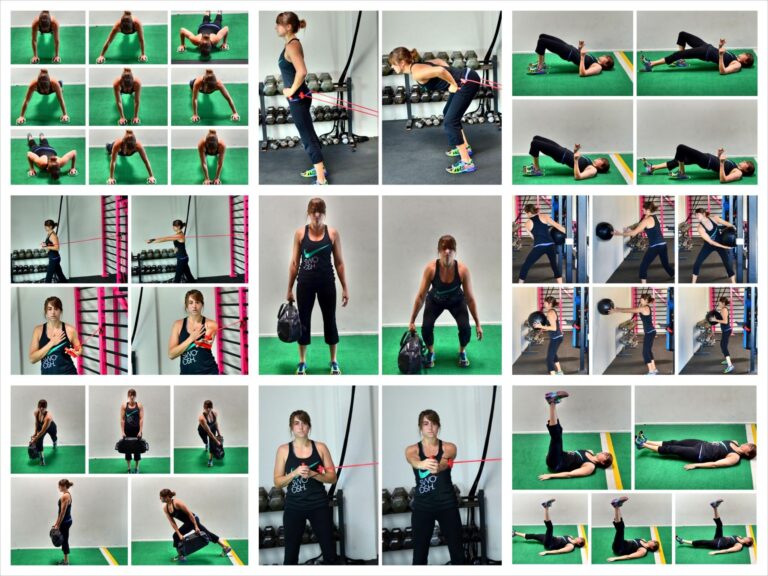Developing a strong core is the foundation of overall fitness, impacting everything from posture to athletic performance. However, achieving lasting results requires more than just random exercises—it demands a well-structured, effective workout routine designed to strengthen the deep muscles that support your spine adn stabilize your body. In this article,we’ll explore proven core strength workout routines that go beyond the basics,providing you with practical guidance to build endurance,improve balance,and enhance your functional strength for the long term. Whether you’re an athlete, a fitness enthusiast, or someone aiming to reduce back pain, these targeted workouts can transform your approach to core training and deliver sustainable results.
Table of Contents
- Understanding the Fundamentals of core Strength and Its Benefits
- Key Exercises to Build a Solid and Balanced Core
- Designing a Progressive Workout Plan for sustainable Core Development
- Incorporating Recovery and Nutrition Strategies to Maximize Core Strength Gains
- concluding Remarks
Understanding the Fundamentals of Core Strength and Its Benefits
Core strength is much more than just having sculpted abs; it serves as the foundation for nearly every movement you perform daily.The core includes not only the abdominal muscles but also the obliques, lower back, hips, and pelvis. Strengthening these muscles improves posture, enhances balance, and stabilizes the spine, reducing the risk of injuries during physical activities. Whether you’re lifting heavy objects or simply sitting at a desk, a strong core acts as your body’s central support system, enabling efficient and safe movement.
The benefits of a well-developed core go beyond physical performance—they contribute considerably to overall health and quality of life. Core training can:
- Improve athletic performance by boosting power transfer and endurance
- Alleviate chronic lower back pain through enhanced spinal stability
- Enhance breathing efficiency by supporting diaphragm function
- Promote better coordination and reduce the likelihood of falls in older adults
understanding these fundamentals is crucial before diving into targeted workouts, ensuring you’re not only training to look good but also to feel strong and resilient every day.
Key Exercises to Build a Solid and Balanced Core
Targeting multiple muscle groups within your core is essential for stability and functional strength. Incorporating exercises like planks, Russian twists, and leg raises engages your rectus abdominis, obliques, and transverse abdominis concurrently. These movements promote a balanced development that not only enhances your posture but also reduces the risk of injury during athletic or everyday activities. For optimal results, focus on slow, controlled motions that emphasize muscle tension over speed.
Along with customary core exercises, integrating dynamic movements such as mountain climbers and cable woodchoppers challenges your muscles in varied ranges of motion, improving both endurance and power. Utilizing a combination of isometric holds and rotational exercises ensures that your core can stabilize while resisting forces from multiple directions. Remember to pair these exercises with proper breathing techniques and consistent progression, gradually increasing intensity to build a resilient, balanced midsection that supports your overall fitness goals.
Designing a Progressive Workout Plan for Sustainable Core Development
At the heart of building a resilient core lies the art of progression—gradually enhancing challenge to avoid plateaus and injury. Start by mastering foundational movements such as planks, dead bugs, and bird dogs, focusing on impeccable form and controlled breathing. Once these exercises become second nature, incrementally increase intensity by introducing resistance bands, weighted vests, or extending hold times. Tracking progress is essential; consider keeping a workout journal or leveraging fitness apps to monitor reps,sets,and perceived exertion. This data-driven approach ensures consistent advancement without compromising alignment or mobility.
Implementing variety through a well-rounded selection of exercises targets different core muscle groups—transverse abdominis,obliques,and lower back—promoting balanced strength and injury prevention. Incorporate these key strategies into your plan for optimal results:
- Periodization: Cycle through phases of high intensity and active recovery.
- Functional Movements: Integrate dynamic exercises like medicine ball throws or cable rotations to simulate real-life activities.
- Rest and Recovery: Allocate time between sessions to allow muscle repair and growth.
Structuring your routine with these principles ensures sustainable progress and cultivates a core that efficiently supports every movement.
Incorporating Recovery and Nutrition Strategies to Maximize Core Strength Gains
Optimizing your core strength gains goes beyond the exercise mat; it hinges critically on how well you allow your muscles to recover and what you put into your body. Quality rest is paramount—muscle fibers experience the most growth not during workouts, but while you’re resting. Aim for 7-9 hours of uninterrupted sleep nightly to facilitate tissue repair and hormonal balance. Additionally, integrating techniques such as foam rolling, targeted stretching, and active recovery days can significantly reduce muscle stiffness and prevent overtraining, ensuring consistent progress without plateauing.
Nutrition fuels your performance and recovery,making it indispensable in your core-building regimen. Focus on consuming nutrient-dense foods rich in:
- High-quality proteins (lean meats, legumes, dairy)
- complex carbohydrates (whole grains, vegetables)
- Healthy fats (avocados, nuts, olive oil)
- Hydrating fluids and electrolytes
These macronutrients work synergistically to repair muscle tissue, replenish glycogen stores, and reduce inflammation. Combining strategic recovery protocols with a smart, balanced diet not only accelerates muscle growth but also fortifies your core for sustained functional strength and injury resilience.
Concluding Remarks
Incorporating effective core strength workout routines into your fitness regimen is not just about achieving a toned midsection—it’s about building a foundation for overall health, stability, and lasting performance. Remember, consistency and proper form are key to unlocking the full benefits of these exercises. By committing to a well-rounded core program and listening to your body’s needs, you set yourself up for sustainable progress that goes beyond aesthetics, enhancing your everyday movements and reducing injury risk.Stay dedicated, be patient, and your core will become the resilient powerhouse you need for lasting results.

